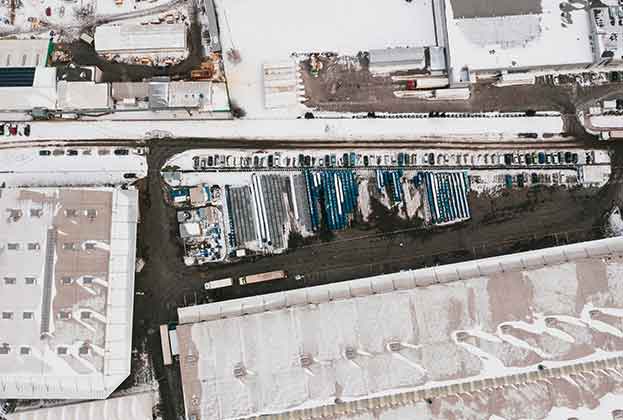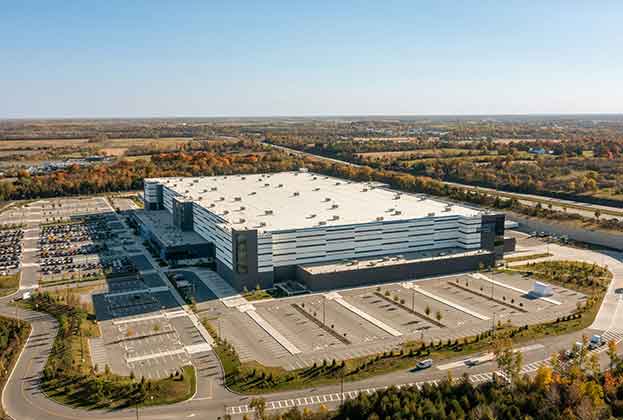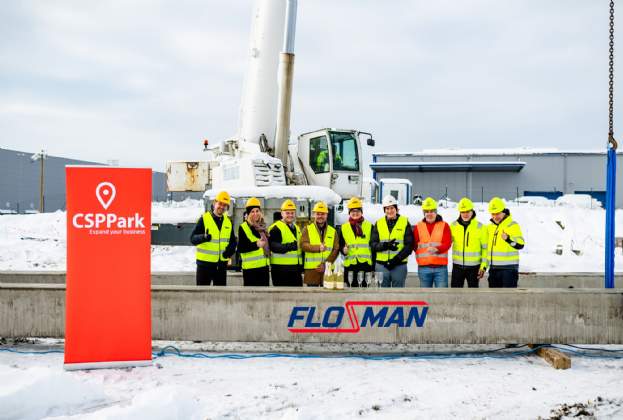Savills research released in December showed that of the 500,000 square metres of industrial-logistics space anticipated for delivery next year in the Czech Republic, 52% is pre-let. With such demand for industrial-logistics in a land-constrained country like the Czech Republic, it should come as no surprise that developers are increasingly looking beyond core markets such as Prague into second-tier areas such as the north-east region around the city of Ostrava.
In the Ostrava region, the long-established CTP is preparing another park in the Poruba district. Contera, which already operates its Ostrava City Park, is building a new 140,000 sq m park on 35 ha in Hrušov by the D1 motorway. And GLP is also building in that area with its GLP Park Ostrava Hrušov, which will have 92,000 sq m of space.
In October 2020, P3 announced it had signed an agreement with the engineering group Vítkovice to buy 44 ha of land in the Vítkovice area. Then in December, Ostrava’s City Assembly approved the sale to Panattoni of almost 39 hectares of land in Mošnov, where Ostrava airport is located. The airport area is already host to Concens’ Ostrava Airport Multimodal Park.
What factors are drawing these developers to Ostrava?
Steel heart
First and foremost, there is more land available for development in the Ostrava region than in the saturated core areas surrounding Prague, Brno and Plzen.
Once the “steel heart” of Czechoslovakia thanks to its status as a coalmining and metallurgical centre, the Ostrava region is littered with brownfield sites. Remnants of a faded industrial era, these areas have, until now, remained largely overlooked by developers as there was plenty of greenfield sites available. With land becoming scarcer, these brownfields have become more attractive to develop on.
GLP Park Ostrava Hrušov is being built on the site of a former chemical plant; Contera’s nearby project is on a social brownfield, a former residential area for workers; and P3’s park will be built on the former iron ore works called Aglomerace.
According to Aleš Zacha from P3, the undeniable advantage of Aglomerace’s revitalization, where demolition and remediation work has already been successfully completed, is the existing infrastructure and the reuse of an abandoned traditional industrial zone near the city centre.
Michal Přib from GLP shares the same view about GLP Park Ostrava Hrušov, saying that remediation of the area started with the demolition of two 100-meter-high chimneys of the former chemical plant and the decontamination phase should follow soon, so that a safe and modern facility can be developed in the locality.
Last but not least, a friendly approach from the municipality is indispensable. This is confirmed by Lucie Havlíčková from Contera. In the case of Contera Park Ostrava D1, the city was consolidating plots from small owners for 10 years, then sold the complete land in a tender to this developer.
The geographical location of Ostrava is certainly a draw. As well as being adjacent to a large consumption centre of almost 300,000 people, Ostrava and its surrounds are just 15 km from the Polish border, offering companies a prime location from which to reach the Polish and Slovak markets, as well as a vast network of consumers in Europe’s east, west and south.
For investors, European logistics continues to shine through times of adversity, with average prime yield compression over the last six months of 7 basis points to 4.84 percent, according to Savills research. Compression was even more pronounced in the Czech Republic at 25 bps to 4.25 percent, making Ostrava’s industrial-logistics resurgence an opportune time for investors to look beyond Prague.








.jpg)

.jpg)